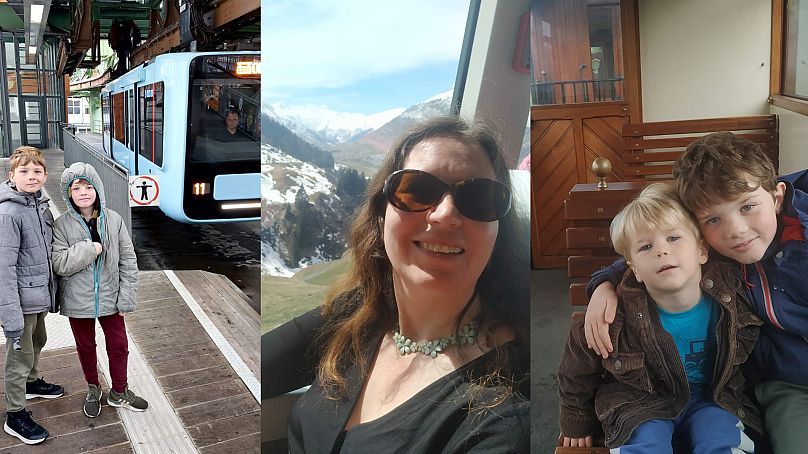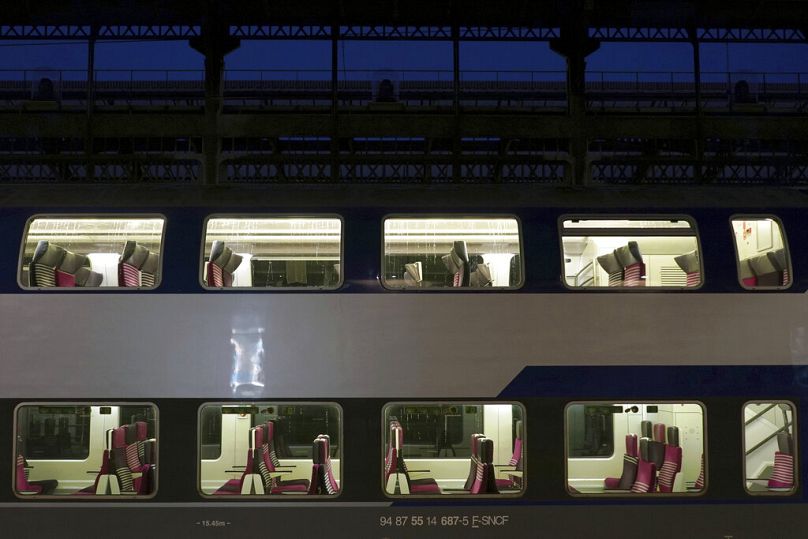Embarking on my grand Interrail journey across Europe with three young children in tow provided a stark realization of the basic amenities offered within train carriages.
From the luxurious wide-seats and expansive glass panels of the Glacier Express to the graffiti-adorned wagons jolting along a side track where finding even a slightly comfortable spot was rare, we encountered every extreme.
Due to the significant differences in railway vehicles among various operators and nations, travelers can be uncertain about their experience when boarding a train in contemporary Europe.
Watching my whooping toddler whizz down a slide at an onboard playground inside a Swiss train got me thinking about just how much the passenger experience has changed over the 200 years since train travel started making tracks.
What's changed since the early days of rail travel?
This September marks the 200th anniversary of the opening of the Stockton and Darlington Railway in northern England. This historic event was the first time hundreds of passengers had been transported by rail.
Looking back, it's hard to imagine just how exciting those first train experiences must have been - and how uncomfortable they were for some.
For the first few years of the railways, third-class passengers weren't even afforded the luxury of a roof over their heads. Instead, they were left at the mercy of the elements and smoke from the engine.
These ‘cattle class’ carriages were phased out across Europe by the 1950s, replaced by a two-tier system of standard and first class that still survives today.
Over the years, sleeper cars and onboard eating options have been introduced, meaning passengers can get fed and find a bed while they travel.
If you are looking to get a taste of just how much passenger rail travel has changed since its inception, many lines still run historic routes with authentic carriages and engines.
My family loves a heritage train ride and we're lucky to live on the doorstep of the line that launched the very first package holiday in 1841, when Thomas Cook offered a day trip from Leicester to Loughborough.
Railway buffs can recreate that trip on the Great Central Railway, which runs steam and diesel trains throughout the year.
It's a little glimpse into trains and times gone by, with seating in compartments, and waiting rooms, including one for ladies only, with open fires in the grate in the winter. Passengers even have to open the doors by leaning out of the window to use the outside handle.
Another place which really highlights just how much train travel has changed over the years is Wuppertal in Germany . Here, the Schwebebahn, the world's oldest electric suspension railway, still runs the length of the town, following the line of the river below.
Stepping off a wooden platform into a carriage dangling below a single rail is quite the experience. It just goes to show that train travel hasn't always been carriages being pulled along tracks on the ground - innovators have experimented with different systems along the way.
While historic experiences are interesting for a one-off trip, we now expect far more from our everyday rail journeys. The realities of modern train travel, however, can vary wildly depending on when and where you go.
What can passengers expect inside a modern train carriage?
Our Easter Interrail extravaganza covered the Netherlands, Austria, Switzerland, Germany, Belgium, France and the UK. We never quite knew what we would find when we boarded each train.
Even with an Interrail pass, there were some trains where seat reservation fees were compulsory, such as Eurostar and the Glacier Express in Switzerland, and it certainly seemed like we were getting what we paid for, with cleanliness, comfortable seats and attentive carriage attendants all enhancing our experience.
Across various countries, the quality of train travel under our pass fluctuated significantly. In terms of passenger care, I found the Netherlands nearly ideal, especially regarding families with children boarding the trains. However, Germany presented a contrasting scenario, characterized notably by extensive graffiti within stations and carriages. station and on the trains themselves.
Some of the carriages we found ourselves in were rundown and we even missed a train at one point as it set off from one end of a platform while we were waiting at the other, unaware that we couldn't board there.
Access to charging points and WiFi is still pretty hit-and-miss across the network, especially on smaller local trains.
But there are lots of modern-day innovations that make passengers’ journeys more comfortable.
We loved travelling in double-decker trains in France and the Netherlands, which accommodate more passengers without the need for extra carriages.
Certainly! The family areas within Swiss Intercity trains became incredibly popular. Can you imagine how excited children get about finding play spaces right inside their train carriages, making the trip seem much shorter? Older kids enjoyed themselves with board games embedded in the table surfaces designed specifically for their entertainment.
We noticed areas designated for transporting bikes Safely and securely, with passengers required to reserve and pay for a spot for their bicycle onboard. However, not all trains offer this service, so you should verify what's permitted before going to the station with your bike.
How might travelers' experiences change during journeys in the coming years?
As there is a revived enthusiasm for sleeper trains throughout Europe, it is logical that railway businesses are seeking to invest in novel methods to enhance the overnight travel experience for customers.
I must admit our overnight journey from the Netherlands to Innsbruck wasn’t very relaxing. The passengers and their baggage were squeezed into tiny compartments where the seats also served as beds. Thus, anything that led sleeper car Entering into the 21st century would be welcomed!
In the previous fall, the Austrian branch of the Skoda Group presented their Sleep in Motion concepts for sleeping compartments within double-decker trains. These compartments would be arranged along either side of a central aisle. Meanwhile, Alstom from the United Kingdom displayed their DreamSuite proposals, featuring seating areas capable of transforming into flat beds, complete with individual privacy screens.
Another passenger priority is keeping bags safe Throughout the trip, we noticed an increase in thefts from trains over the past few years. To ensure our belongings were safe, we carried a cable lock to securing our baggage to the overhead storage rack.
From our experience, we discovered that European trains require a more structured system with integrated safety features. For instance, Japanese bullet trains offer lockable compartments for passengers' use. stow their bags It’s quite different from the days when rail travel was at its peak and passengers could simply send their suitcases and packages ahead to be waiting for them upon arrival at their destination.
For those who appreciate leisurely and eco-friendly travel, improving the traveler’s experience on board is just as important as adopting cleaner train technologies such as hydrogen fuel or boosting service speeds and punctuality. While environmentally friendly trains are beneficial, they won’t succeed unless passengers choose to use them, making rail a practical option only when ridership increases.
Norske tog's Project Manager, Sille Svenkerud Førner, captured it perfectly during Norway’s announcement of an investment in 17 new long-distance FLIRT NEX trains. These models boast reclining seats, adaptable sleeping quarters, a café area, family-friendly configurations, and generous storage for belongings.
As she put it, "The train shouldn't just serve as a mode of transportation; it should also offer an experience and be somewhere you enjoy being."

